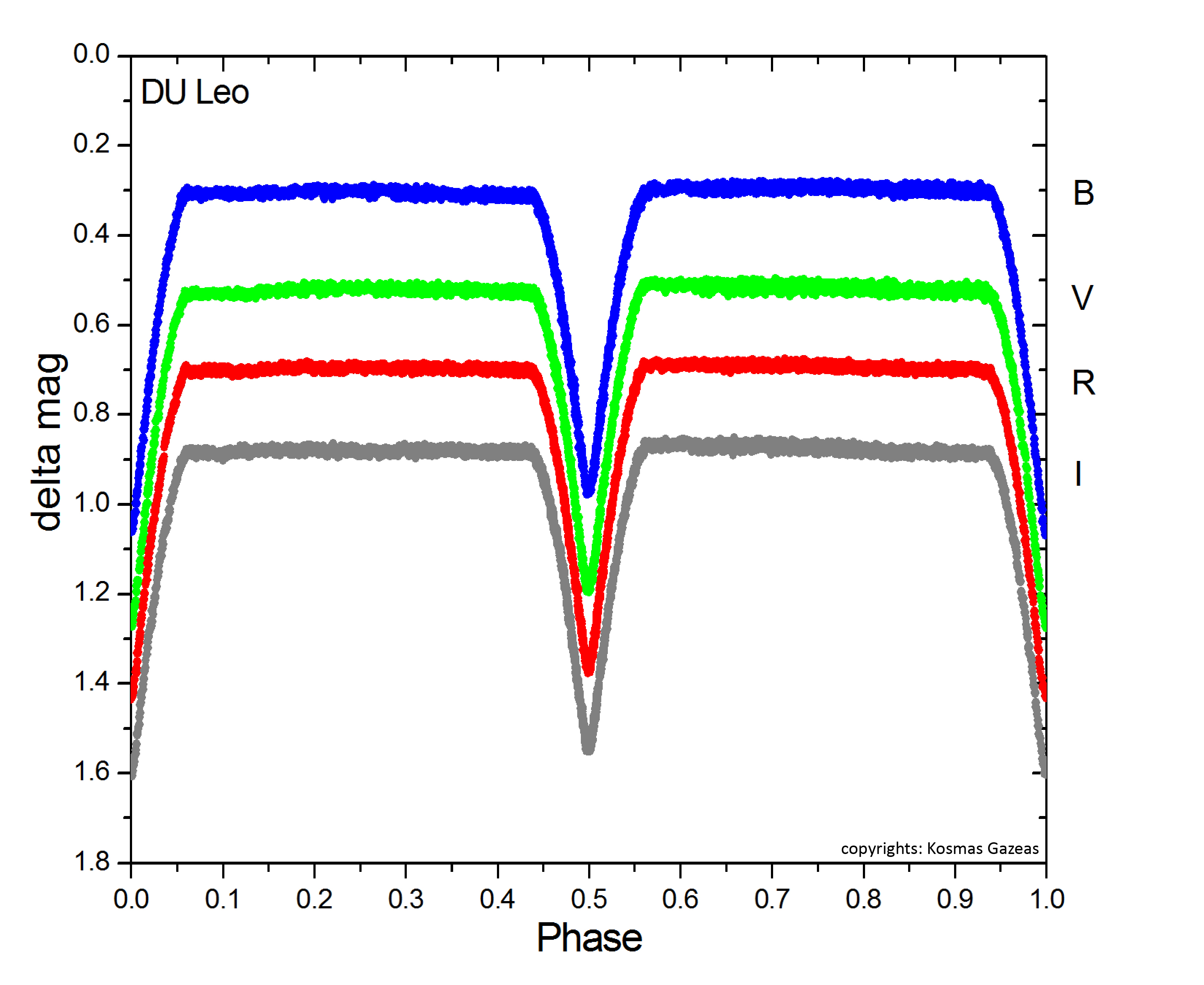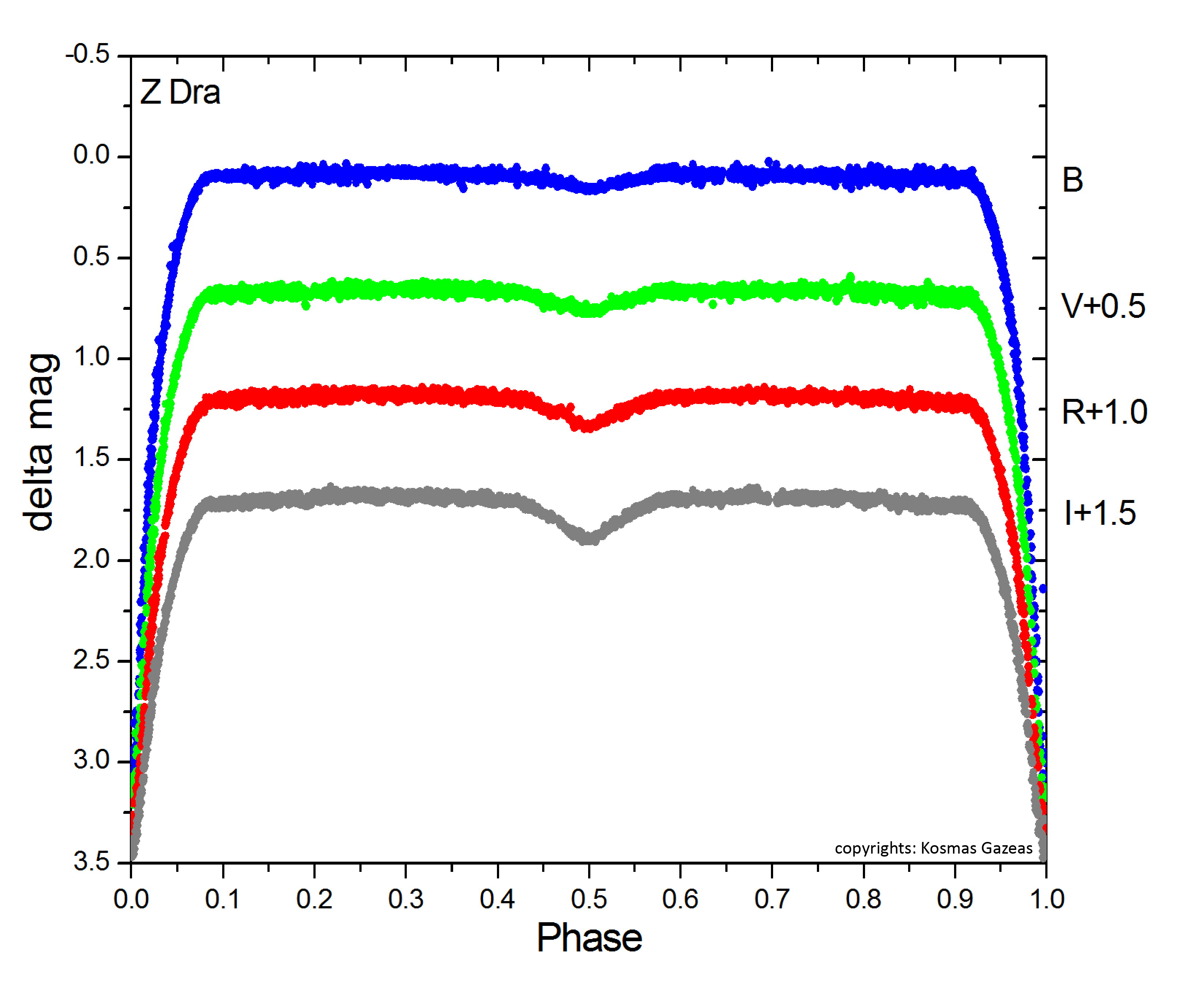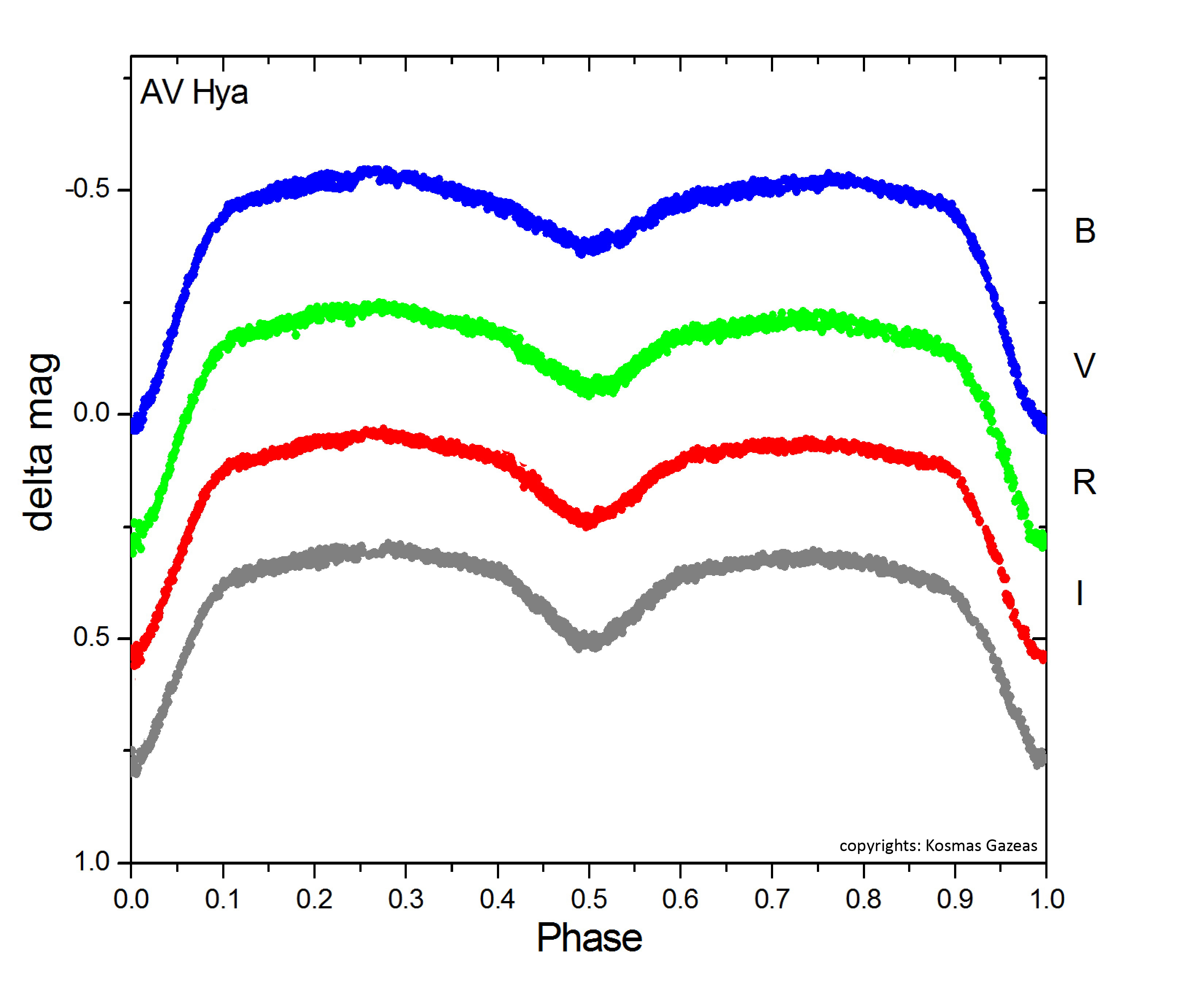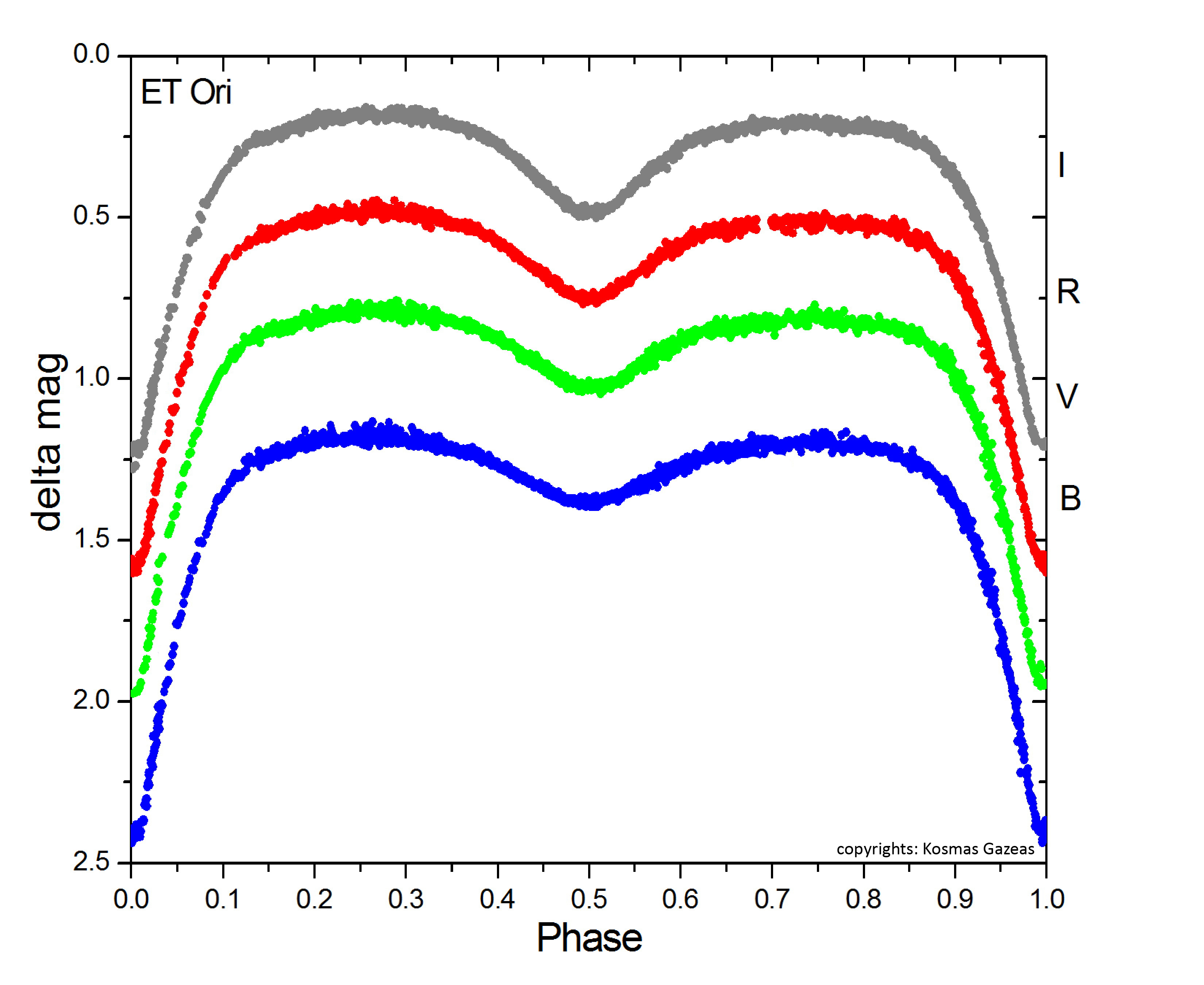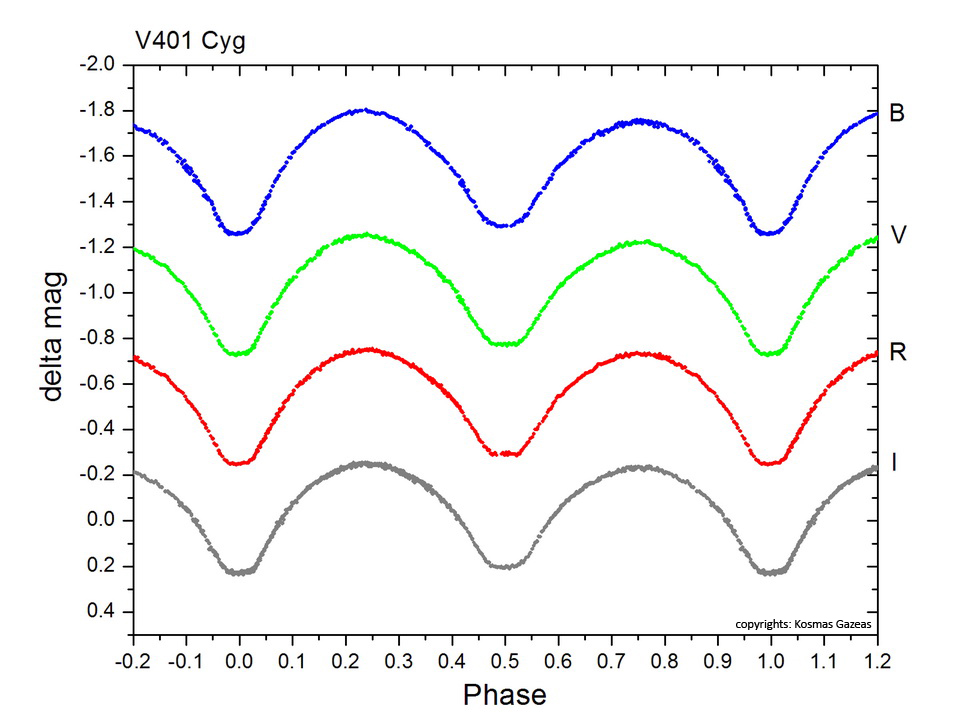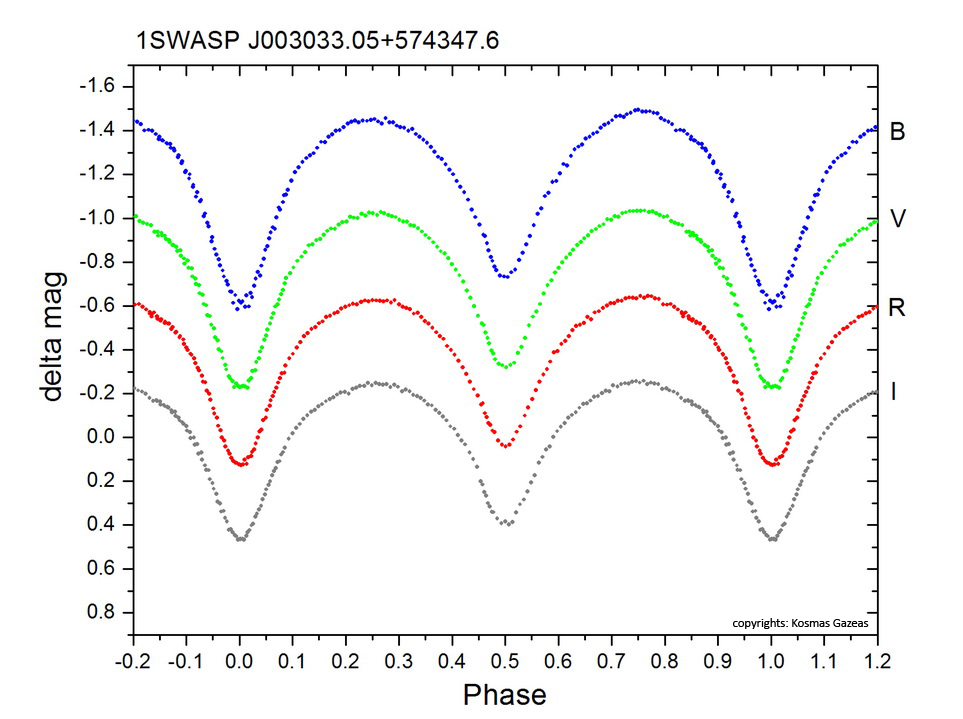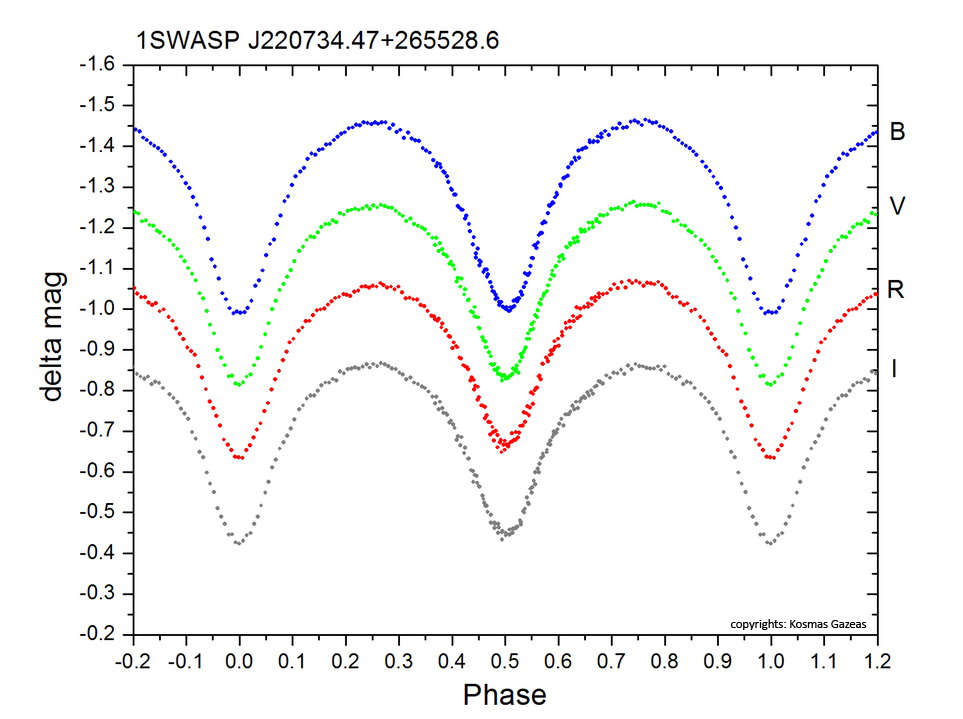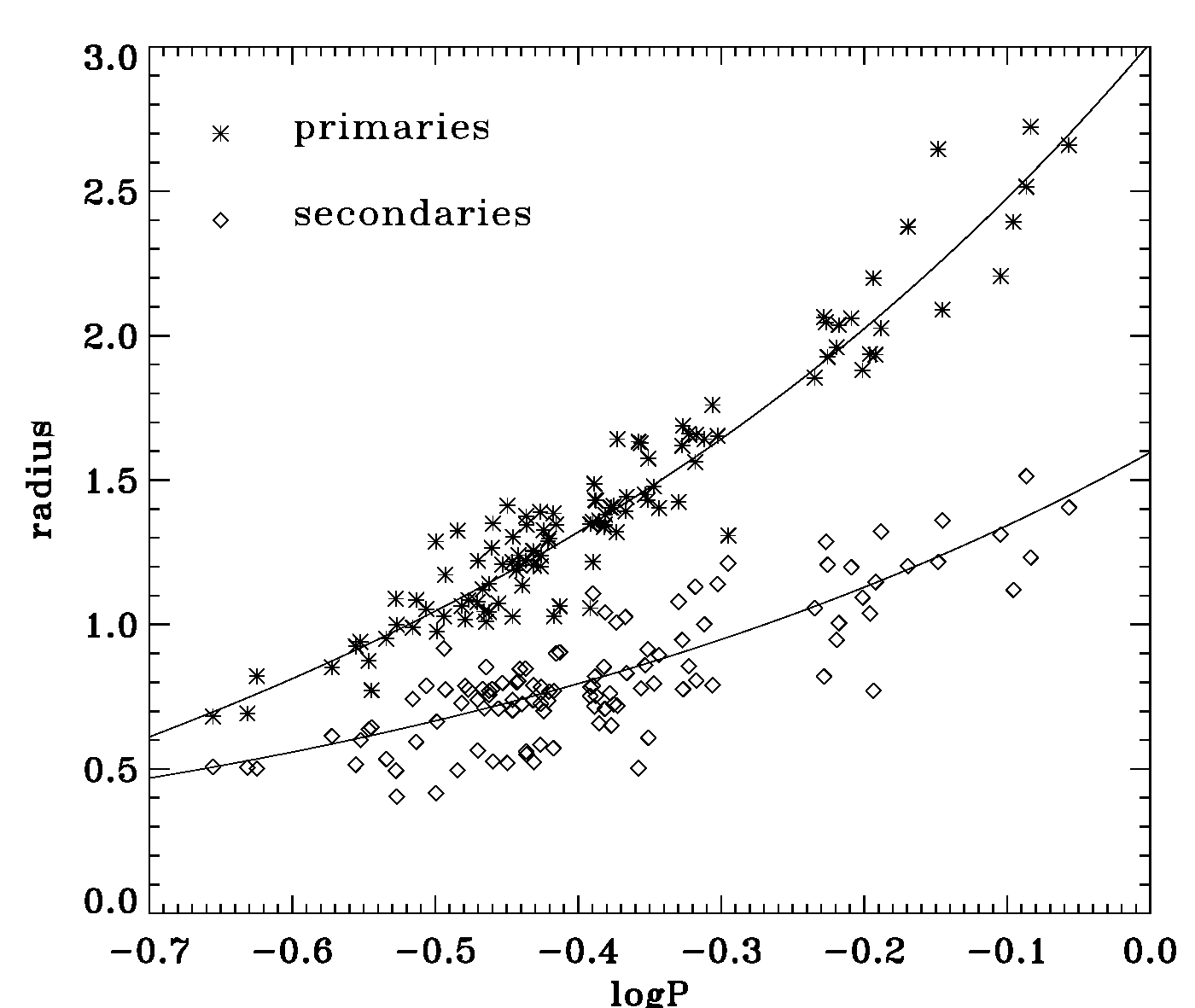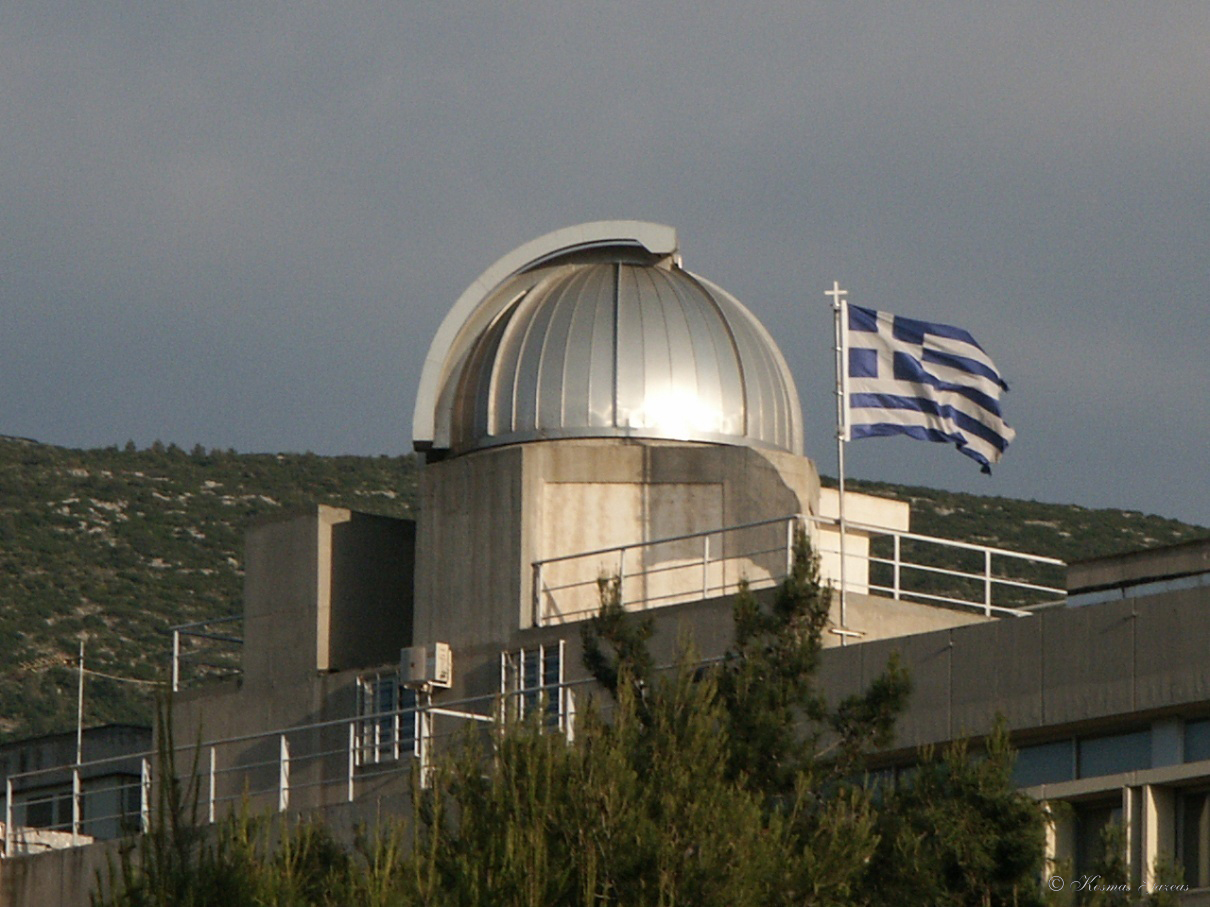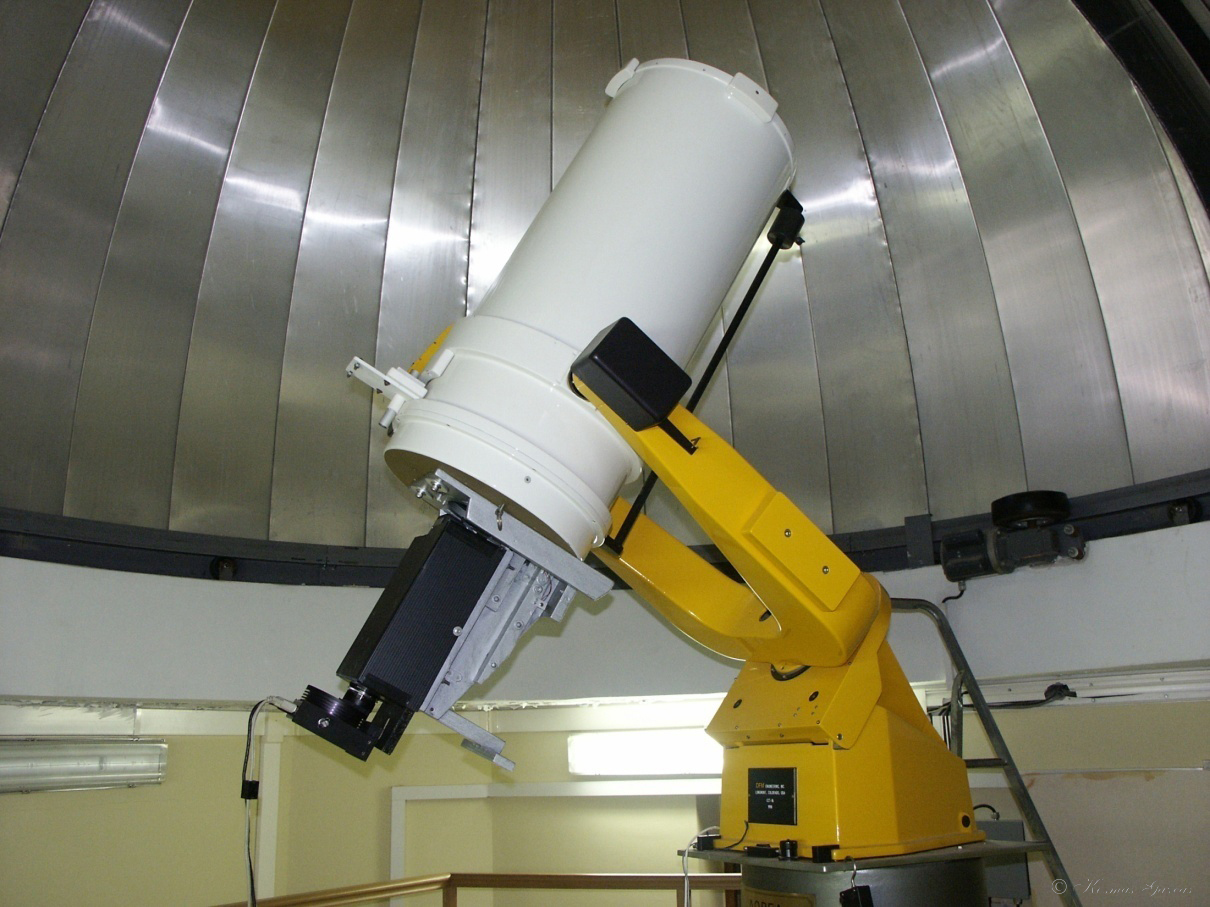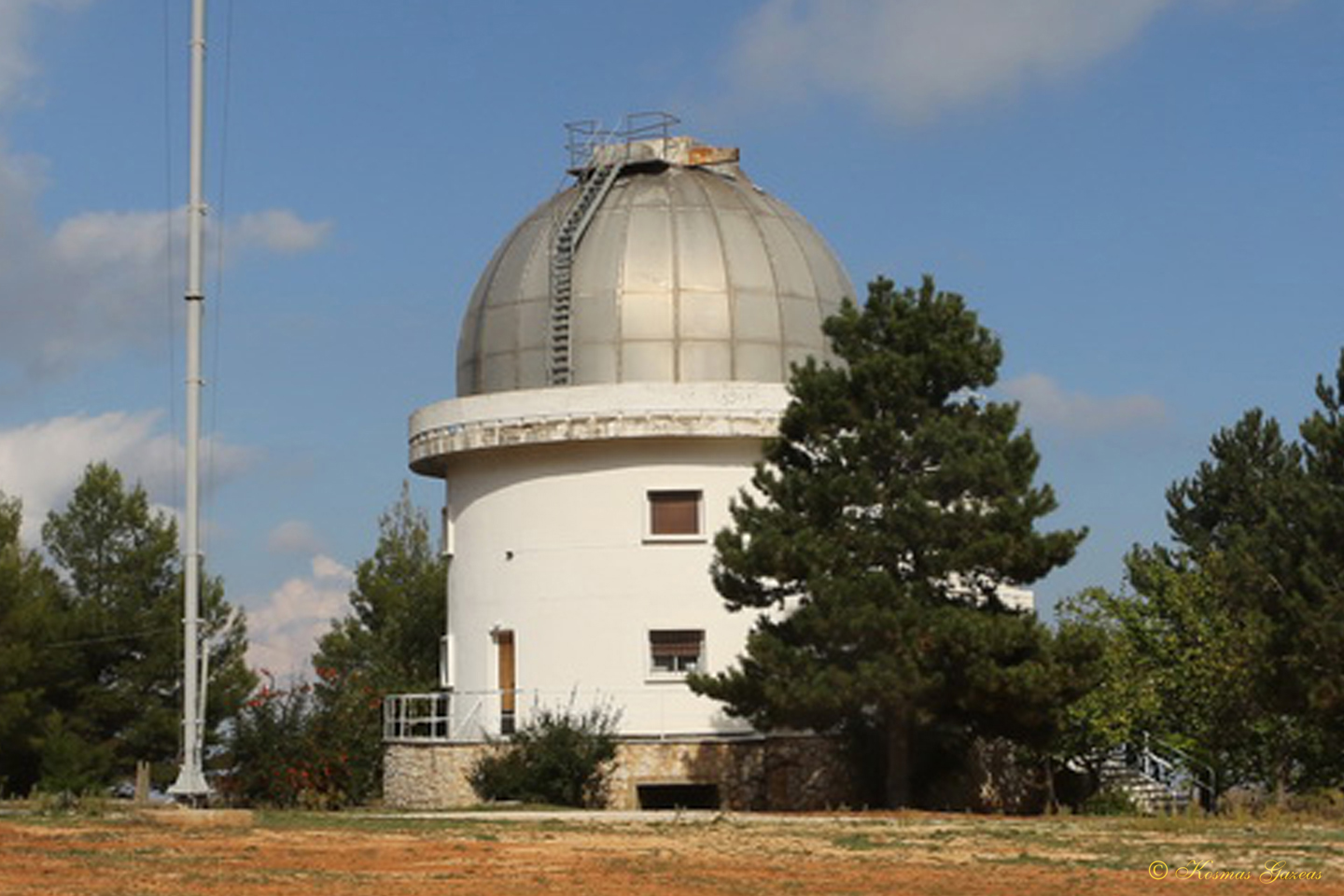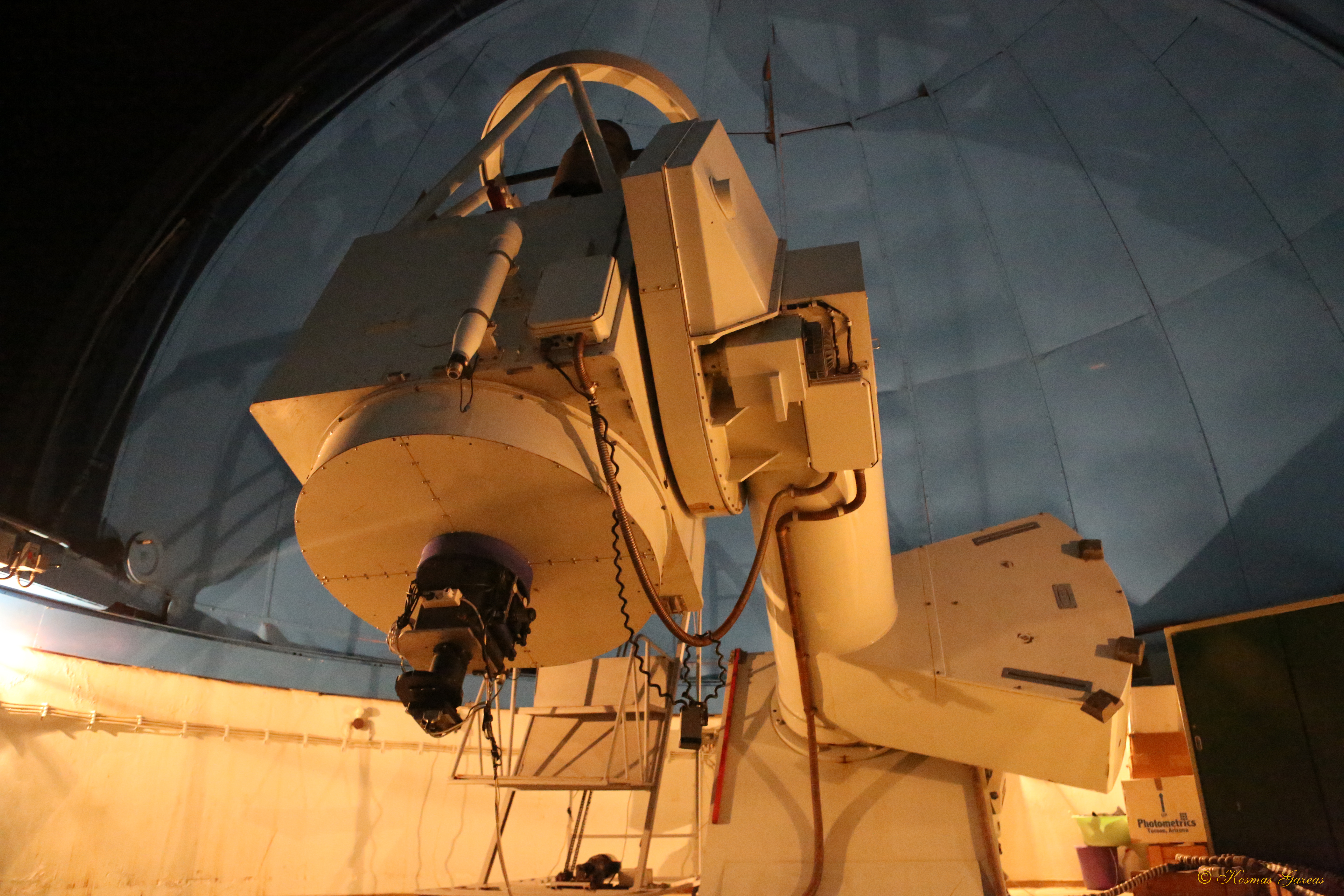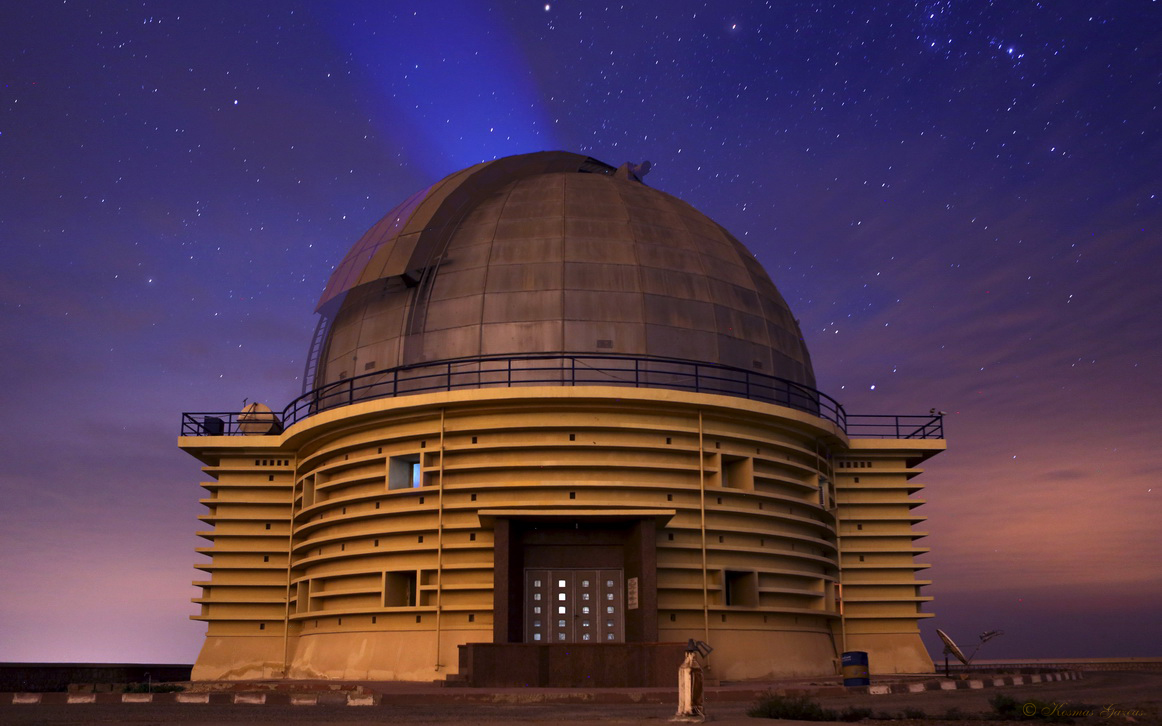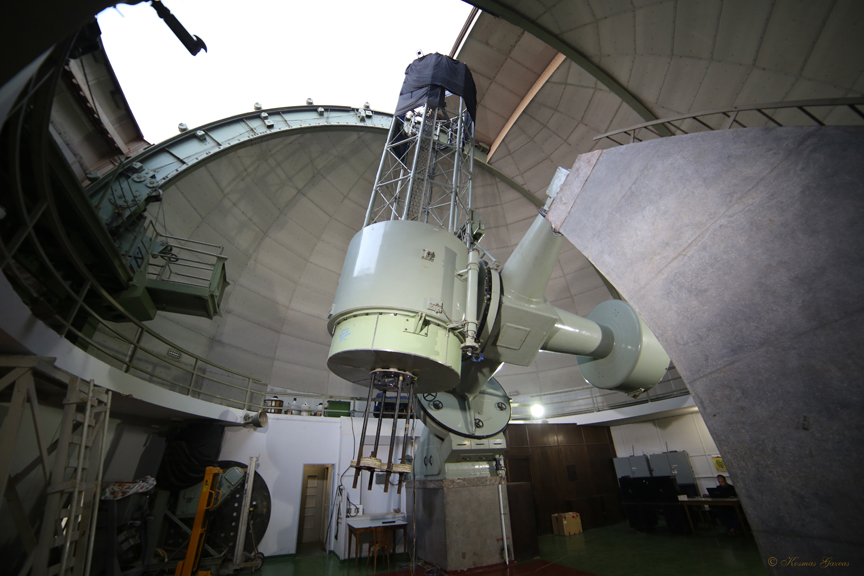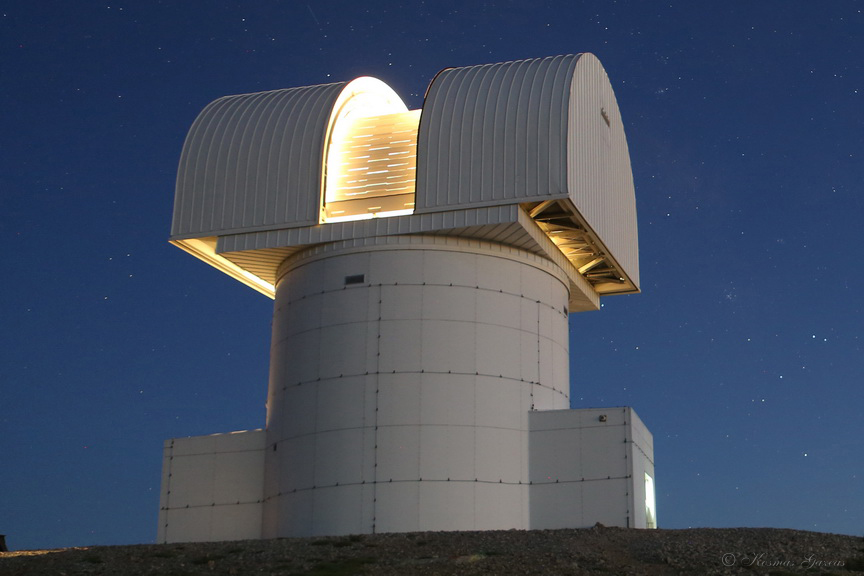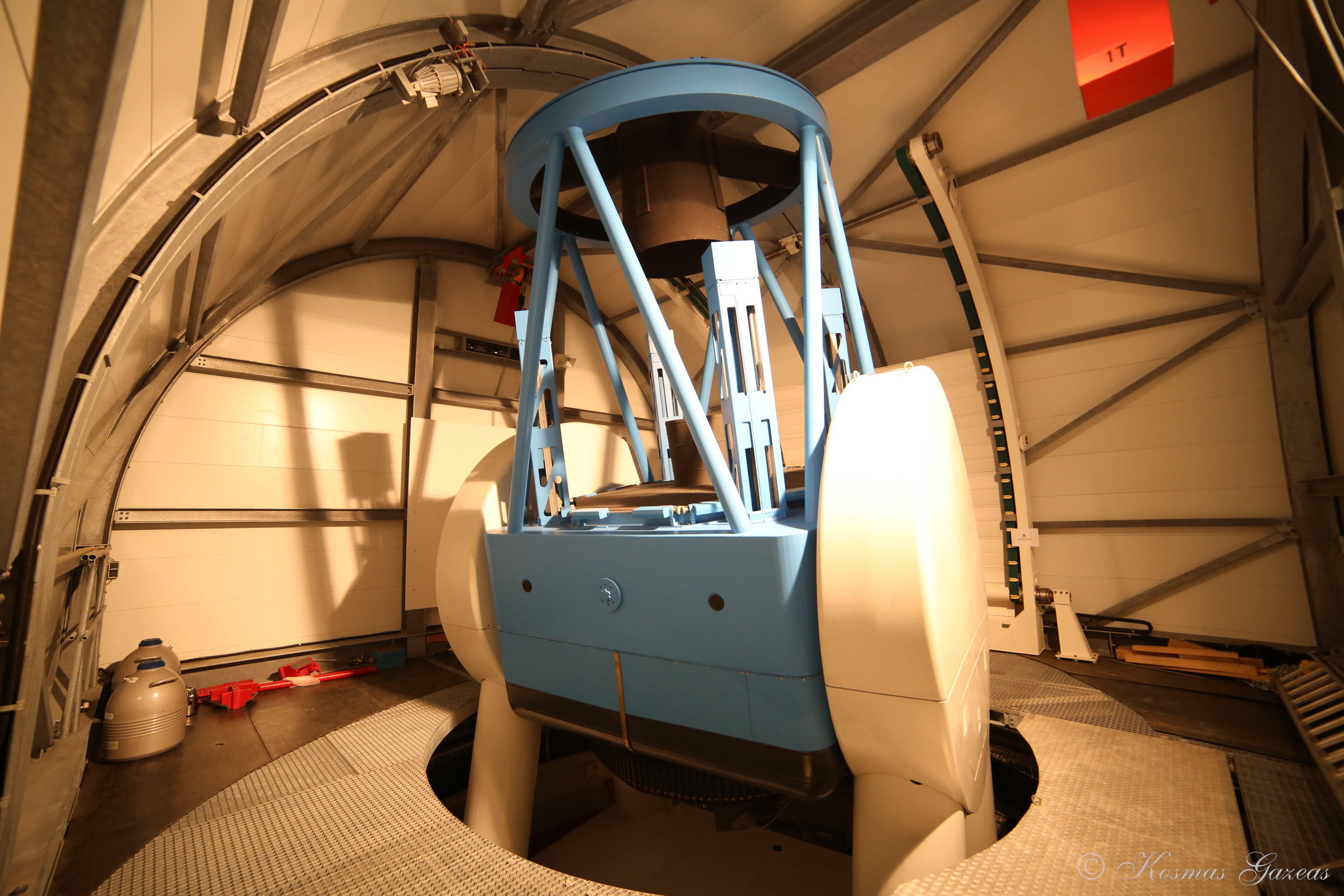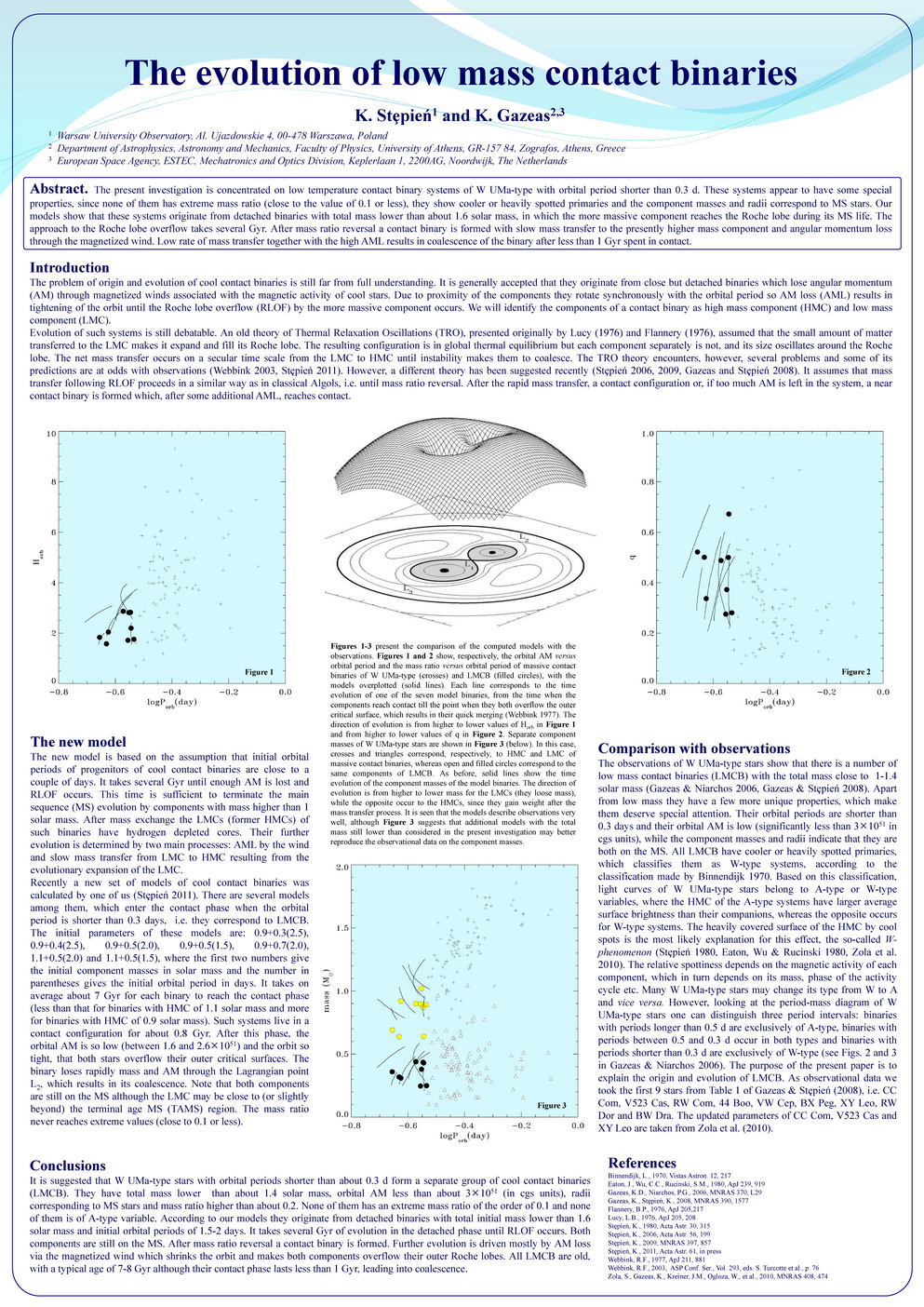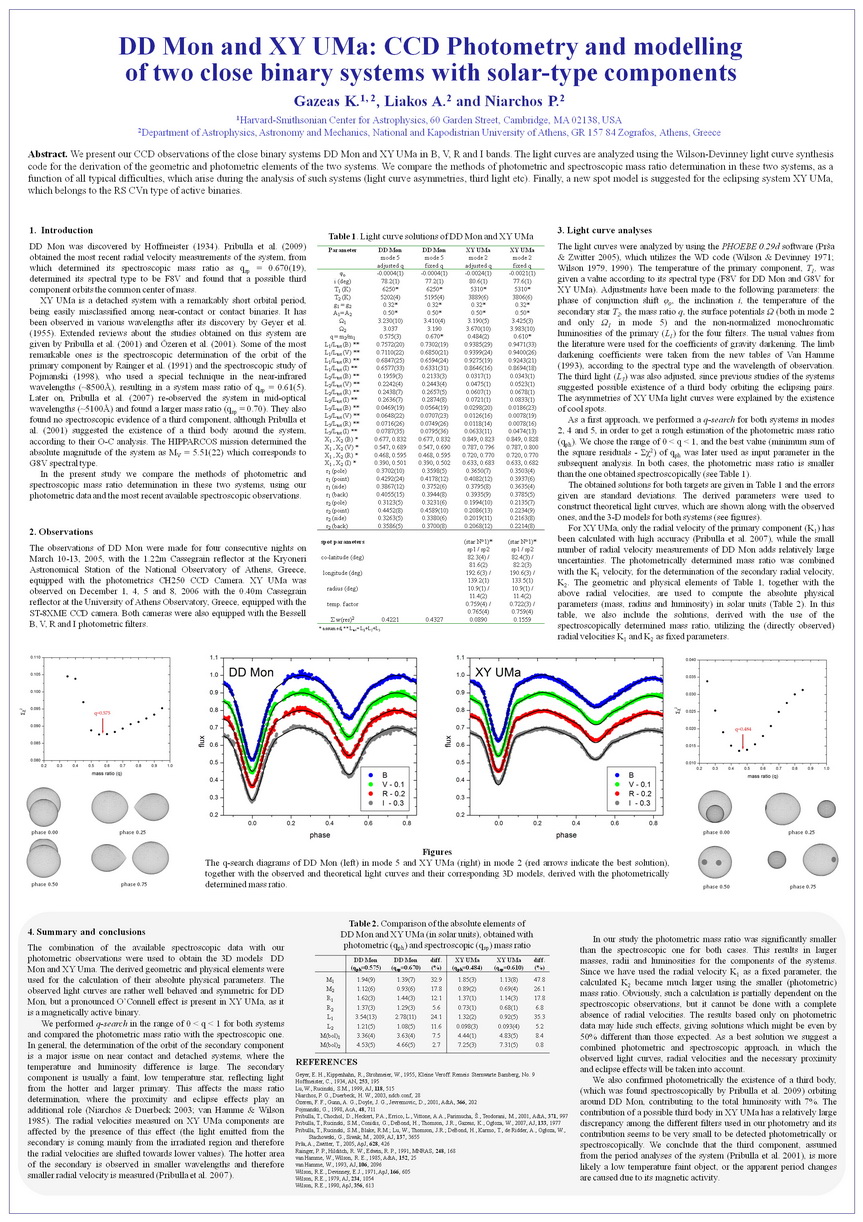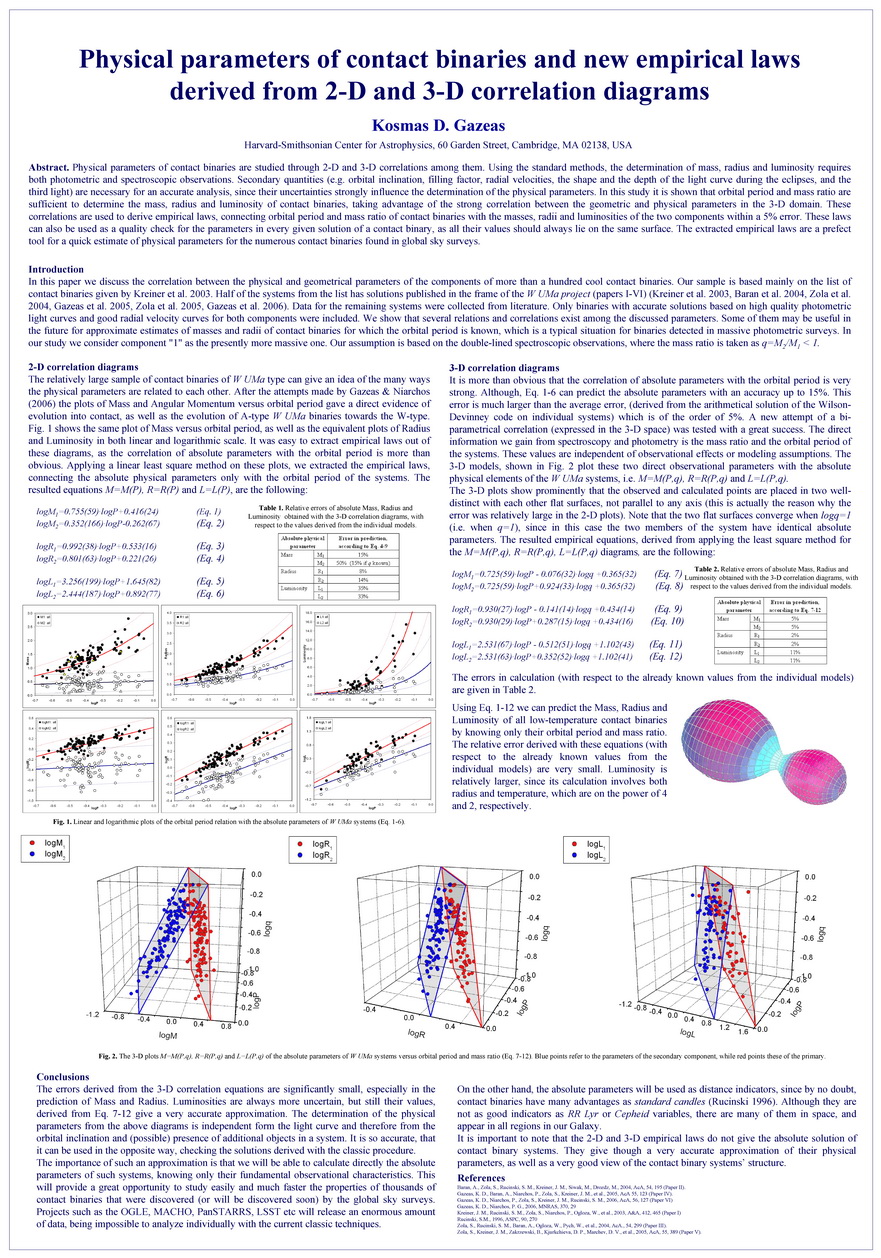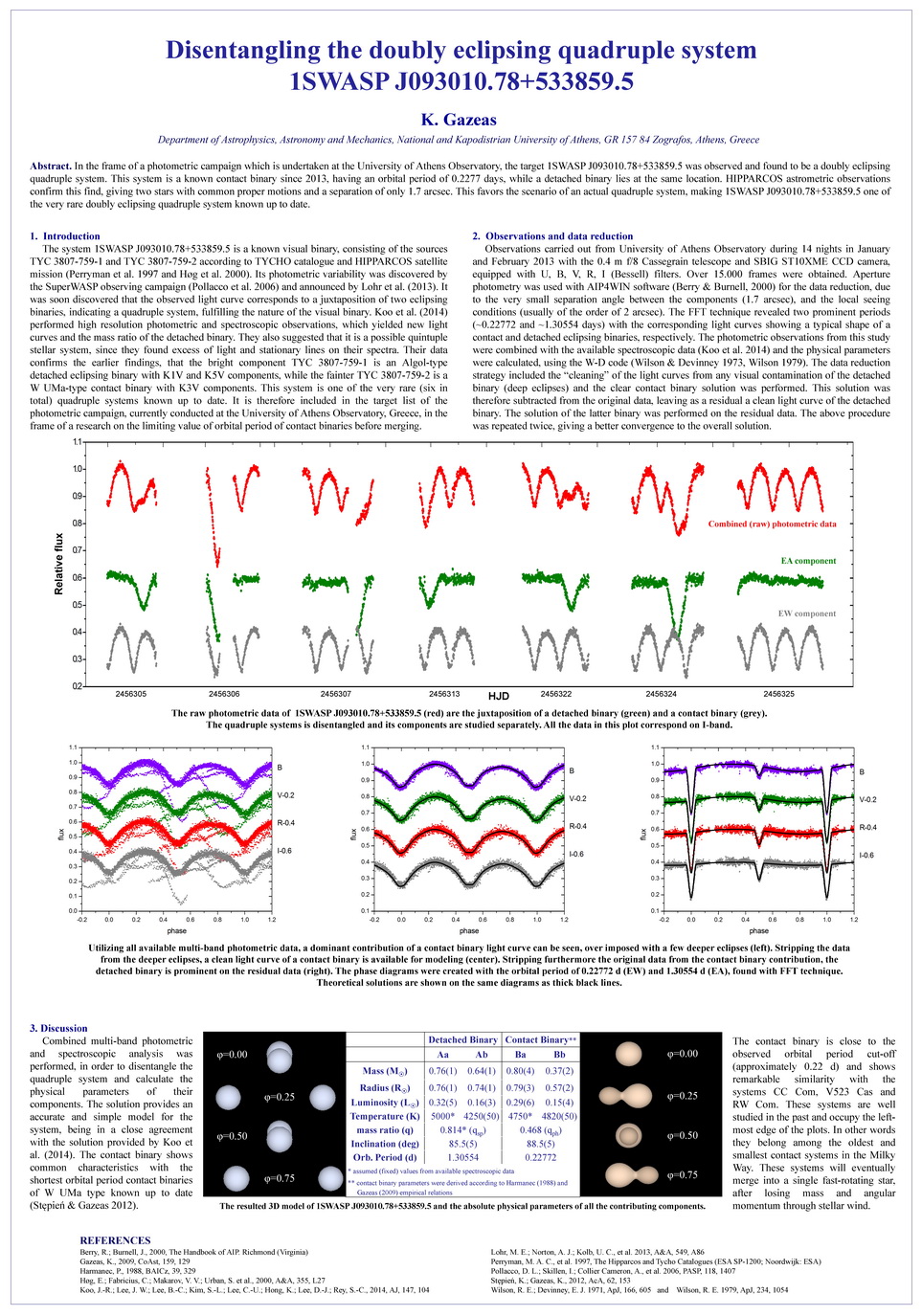Research on Eclipsing Binaries
More than 70% of the known stars are members of a binary or a multiple system. A binary star system, or binary star for short, is a star system which contains two stars that orbit about one another, rotating around their common centre of mass. More complex systems also exist. For example, triple systems contain 3 stars, quadruple systems 4 stars, quintuple systems 5 stars and sextuple systems, like Castor, contain 6 stars.
An eclipsing binary star is a binary star in which the orbit plane of the two stars lies so nearly in the line of sight of the observer that the components undergo mutual eclipses. In the case where the binary is also a spectroscopic binary and the parallax of the system is known, the binary is quite valuable for stellar analysis, as they give valuable information about stellar masses, radii and luminosities. Eclipsing binaries are variable stars, not because the light of the individual components vary but because of the eclipses (due to their geometrical configuration). The light curve of a detached eclipsing binary is characterized by periods of practically constant light, with periodic drops in intensity. If one of the stars is larger than the other, one will be obscured by a total eclipse while the other will be obscured by an annular eclipse. The orbital period of an eclipsing binary may be determined from a study of the light curve, and the relative sizes of the individual stars can be determined in terms of the radius of the orbit by observing how quickly the brightness changes as the disc of the near star slides over the disc of the distant star. If it is also a spectroscopic binary the orbital elements can also be determined, while mass, radius and luminosity of the stars can be determined relatively easily.
Eclipsing binaries can also host pulsating components. In this case, the so-called "oEA systems" offer additional information on asteroseismology and in the research of stellar evolution through tidally induced pulsations.
A sample of extracted light curves after the research on eclipsing binaries is shown below:
The W UMa Project
W UMa-type contact binary stars are surprisingly common in the solar neighbourhood. Although there has long been an awareness of their large number relative to other types of variables, it was not until large samples provided by microlensing surveys, such as OGLE, became available that the first reliable estimates of their spatial frequency were made. The apparent relative frequency of W UMa-type stars was estimated at about 1/130 of the frequency of the common solar neighbourhood FGK-type disc population dwarfs with an age of about 5-11 Gyr. The frequency rises with the age of the system, so that open clusters have relatively fewer of them than the typical disc population, which can reach an age of 11 Gyr.
W UMa-type systems are not observed in clusters younger than 0.7 Gyr. This is in exact agreement with theoretical models, which describe the formation of contact systems by the gradual loss of angular momentum due to the combined effects of tidal coupling and braking by the stellar wind.
Unfortunately the details of the evolution remain unknown, as we do not know what happens at the moment when the contact binary is formed. A true understanding of the evolution is still far off. The ease of observation of W UMa systems has meant that they have been the subject of many poorly-planned programmes (particularly in terms of the choice of targets), which has led to a lack of significant results despite many observations.
The W UMa project was initiated in 2001 and aims to address these issues by carefully choosing target objects so as to maximise their usefulness for understanding the evolution of contact binaries. In addition to a better understanding of the W UMa-type systems, the results of this project can also be used for the study of the structure of our Galaxy, the clusters and nearby galaxies.
So far a sample of 160 contact binaries has been analysed in detail. For each target our group performs very accurate photometric and spectroscopic observations, while HIPPARCOS satellite provides information about parallax, absolute magnitude and therefore distance. W UMa project is the most detailed study on contact binary systems ever made, providing absolute physical and geometrical parameters with accuracy of less than 5%.
The complete list of W UMa-type binaries can be found here.
Several telescopes around the world were used from scientists involved in this project, in order to observe W UMa-type systems. The telescopes used for this project from the members of the University of Athens are:
Contact Binaries Towards Merging (CoBiToM) Project
Contact Binaries Towards Merging (CoBiToM) Project is an optical monitoring program, initiated in summer 2012 by Dr. Kosmas Gazeas at the University of Athens, in order to investigate the orbital period cut-off of contact binaries (∼0.22 days). The program utilizes various telescopes, in order to cover the bright and faint magnitude limit on the targets. High accurate multi-color photometric observations of contact binaries with very short orbital period are studied, in order to investigate the stellar evolution just before merging process. The sample of targets is a selection extracted from the SuperWASP observing program.
CoBiToM Project focuses on the very short limit of orbital periods of contact binaries (left end on the plots below). There are very few binaries occupying this area of the plots, making difficult any attempt to extract solid information about how binary systems evolve and eventually merge into a single star. The goal of this study is to investigate the properties of these binaries, which are very old and evolved, while they have low surface temperature and small size and mass.
The telescopes used for CoBiToM project up to date are:
Observations cover the magnitude range of 11 < mv < 15 in all optical bands (B,V,R,I filters).
(Images are protected with copyrights by K.Gazeas. Please request permission before use.)
Research on eclipsing binaries from the University of Athens Observatory has been announced in referred publications.
